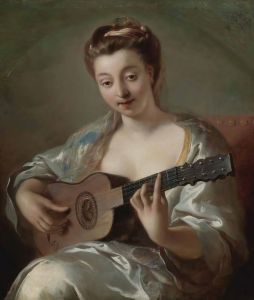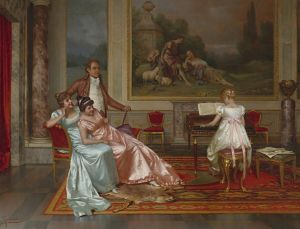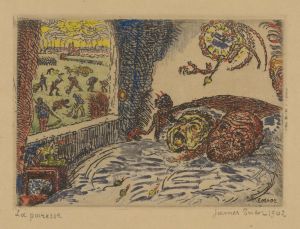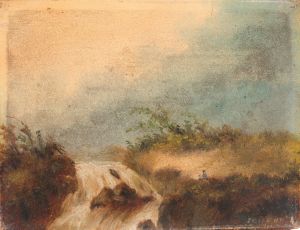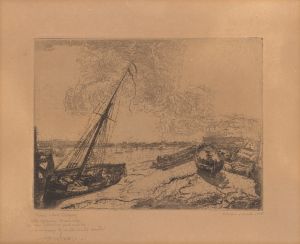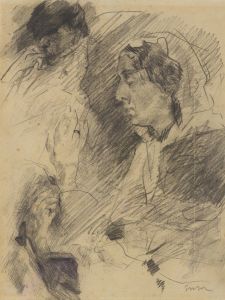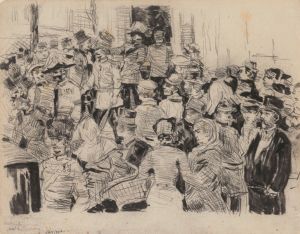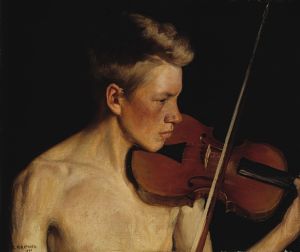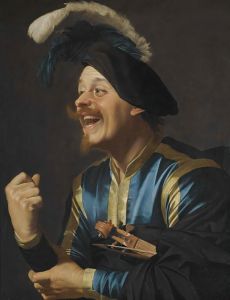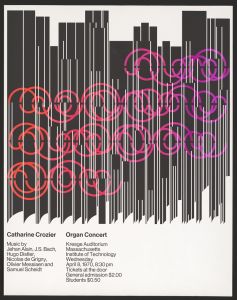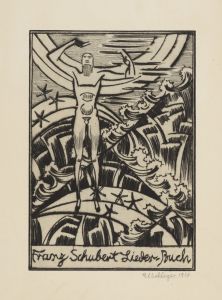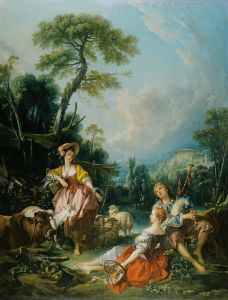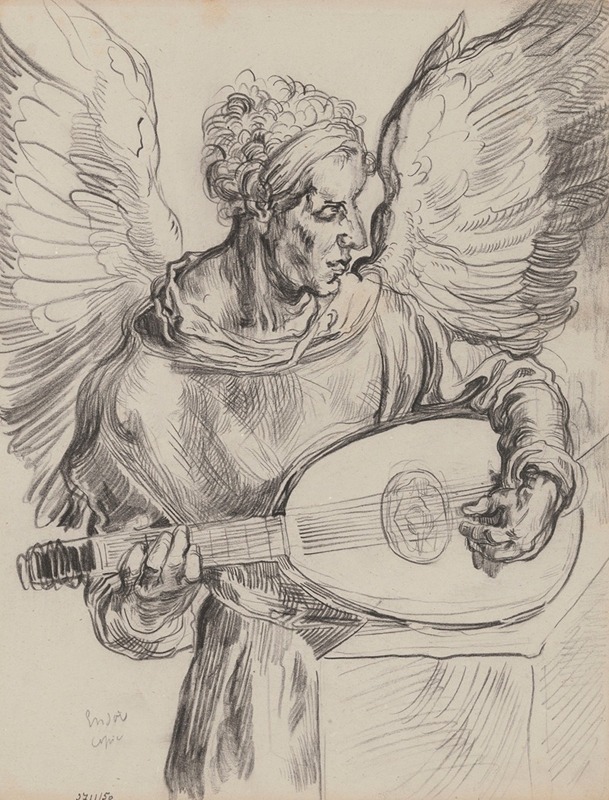
Seraph playing Lute
A hand-painted replica of James Ensor’s masterpiece Seraph playing Lute, meticulously crafted by professional artists to capture the true essence of the original. Each piece is created with museum-quality canvas and rare mineral pigments, carefully painted by experienced artists with delicate brushstrokes and rich, layered colors to perfectly recreate the texture of the original artwork. Unlike machine-printed reproductions, this hand-painted version brings the painting to life, infused with the artist’s emotions and skill in every stroke. Whether for personal collection or home decoration, it instantly elevates the artistic atmosphere of any space.
James Ensor, a prominent Belgian painter and printmaker, is known for his unique and often eccentric style that blends elements of symbolism and expressionism. One of his lesser-known works, "Seraph Playing Lute," exemplifies his fascination with fantastical and religious themes, though detailed information about this specific painting is limited.
Ensor was born in 1860 in Ostend, Belgium, and spent most of his life there. He was a key figure in the Belgian avant-garde movement and was associated with the group Les XX, which included artists who were pushing the boundaries of traditional art in the late 19th century. Ensor's work often features grotesque imagery, masks, and skeletons, reflecting his interest in the macabre and the absurd.
"Seraph Playing Lute" fits within Ensor's broader oeuvre, which frequently incorporates religious iconography. Seraphs, or seraphim, are celestial beings from Christian theology, often depicted as angels with multiple wings. In Ensor's interpretation, the seraph is engaged in playing a lute, an instrument with deep historical and cultural significance, often associated with divine music and heavenly harmony.
Ensor's use of color and form in his paintings is distinctive. He often employed bright, vivid colors and loose brushwork, which can be seen in many of his works from the same period. This approach creates a sense of movement and emotional intensity, drawing viewers into the surreal and often chaotic worlds he depicted. While specific details about the color palette and composition of "Seraph Playing Lute" are not well-documented, it is likely that Ensor's characteristic style is evident in this piece.
Throughout his career, Ensor was influenced by a variety of sources, including Flemish art, the works of Hieronymus Bosch, and the burgeoning symbolist movement. His interest in religious and fantastical themes can be seen as a reflection of these influences, as well as his personal fascination with the spiritual and the mystical.
Ensor's work was not always well-received during his lifetime, as his unconventional style and subject matter challenged the artistic norms of the time. However, he gained recognition later in life and was eventually celebrated as a pioneer of modern art. In 1929, he was awarded the title of Baron by King Albert I of Belgium, acknowledging his contributions to the art world.
Today, James Ensor is regarded as a significant figure in art history, and his works are held in high esteem by museums and collectors worldwide. While "Seraph Playing Lute" may not be as widely recognized as some of his other paintings, it remains an intriguing example of his artistic vision and thematic interests.
In summary, "Seraph Playing Lute" by James Ensor is a testament to the artist's unique style and his exploration of religious and fantastical themes. Although specific details about the painting are scarce, it is representative of Ensor's broader body of work, which continues to captivate audiences with its bold colors, imaginative subjects, and emotional depth.





